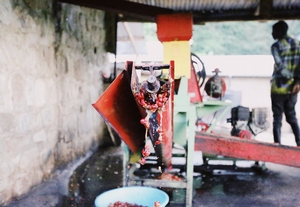
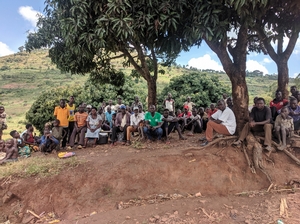
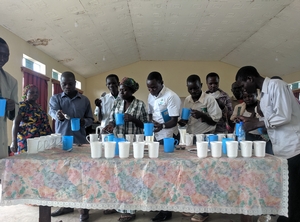
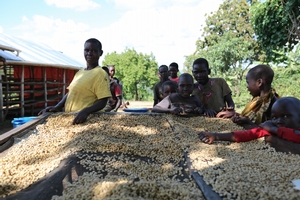
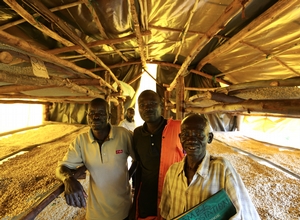
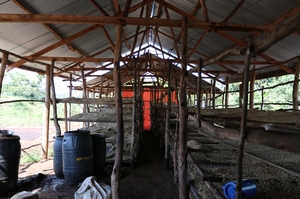
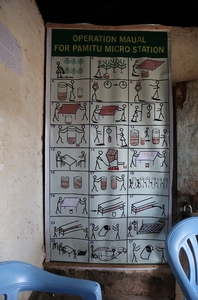
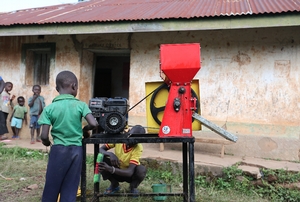
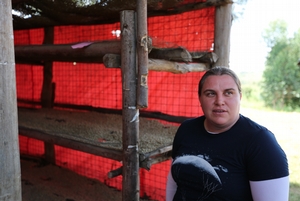
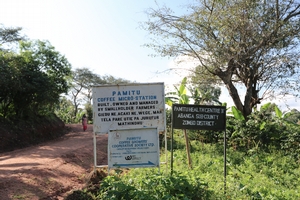
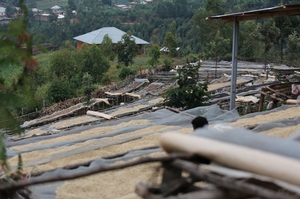
Words and Images by Benjamin Jenkin
I remember when I used to love specialty coffee. Whilst the range of flavours pulled my coffee-to-milk-ratio down that well-trodden latte to cortado path, I was really in love for another reason. Specialty coffee wasn’t just a tasty drink, this coffee had an identity and it had a face.
As a child growing up in 90’s Britain, I was keenly aware of my privilege. Something I always heard about the British is that we say “sorry” too much. This was true for me, I couldn’t wrap my head around why what was “normal” in my life, was not for so many others.
As I turned into a semi-sentient teenager so began a life of chronic do-goodery. The details of which I will save you from to avoid some perverse sense of self-aggrandisement, but there was volunteering, donating blood, even digging trenches for water pipping in Tanzania for (literal) pity’s sake. Specialty coffee fitted perfectly into this, because I could trace my single origin beans back to a specific geography - I could now use my flat white consumption for world saving! Excellent!
My specialty coffee love affair was at its pinnacle when in 2016, I paid ten pounds (between 180-200 rand) for a single cup of AeroPress Burundian coffee. Pretty soon after this, everything fell apart.
Okay, I’m being dramatic. I knew that in that cup was a brew of London rent, living wage employment, flying the coffee in from a Danish roaster, multiple players in the supply chain and then, and only then, the price paid for the coffee. But, after moving to Burundi in 2017 and working in East African coffee since I have found that we need to perform a similar taxonomy on green production in order to establish what farmers are getting. This article attempts to do just that.
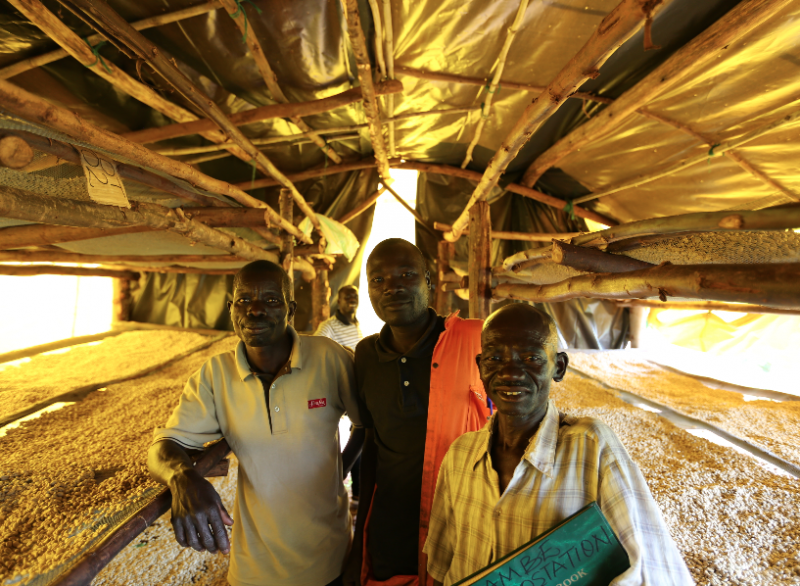
Coffee Production – the numbers of it all
I’m going to start by doing something I hate. Africa is not homogenous, but for this article I will try to make it so. Currently I am writing in Tanzania about my experience in Uganda, I’ve seen things here that wouldn’t make sense over there. So these are just general rules – I’d always recommend roasters and drinkers to spend more time in the details, but unfortunately that is beyond this article’s word count.
It always takes me some time to wrap my head around the numbers of coffee production.
A coffee producer is someone who takes a coffee cherry and turns it into a green coffee bean. In countries like Colombia a farmer may likely also be a producer, in that they both grow coffee and own their own means of production. In contrast in a country like Uganda, a single farm of between 50 – 500 trees does not produce enough surplus to invest in processing equipment.
Once the rains come and the coffee starts to ripen, the farmer will pick the coffee cherry and transport it to a nearby washing station (either privately or cooperatively owned) to sell by weight. After this, the cherries are usually depulped, fermented, washed clean and dried for around 20 days.
The majority of the weight of coffee is not in the bean itself, rather either in the weight of the cherry in which the bean sits or in the moisture that is lost during drying. Numbers change from producer to producer, but a rule of cherry weight to green weight I’ve heard a number of times is 10kg of cherry to every 1.5kg of green coffee, or 6.6kg of cherry to every kilo of green (this is to “all grades”, if you are hand sorting insect damage and broken beans, or pulling out a particular grade AA,AB,PB – you’ll need even more cherry to produce a kilogram!).
We know there is a coffee price crisis. Many commentators much smarter than I have written at length about the New York(NY) C price, what it is and how it works (google coffee price crisis for extra reading).
Briefly, the NY C Price is supposed to be an indicator of the current value of a pound of green arabica coffee. If there is lots of green coffee in the world market the price comes down to make it more appealing to buy, and if there is less coffee in the market the price will go up. This market mechanisms has been influenced by speculators who buy “future” lots of coffee at a given day’s cheap price, in order to sell that contract on for a profit when the price of coffee has gone up (say when Brazil’s production has a bad year). This system creates demand (for contracts) where perhaps there isn’t (for cups of coffee).
In July 2018, the NY C price fell below a dollar a pound (lb). Over the last year the price has not recovered, spending most of the time in the mid-low 90 cent range. This month (November) we have seen a slight recovery with the C holding at around 102 cents.
102 cents per lb of green is roughly 225 cents for a kilogram.
Imagine an ideal world where a coffee washing station has zero costs. So no electricity bills, no maintenance of equipment, no wages to pay (oops, this doesn’t sound very ideal now, right?!), and the only cost was the cost of cherry per kilo at the very beginning of the process. Assuming that the market will buy coffee for 225 cents a kilogram of green coffee - in order to break even, that station could only pay at most 34 cents per kilo of cherry.
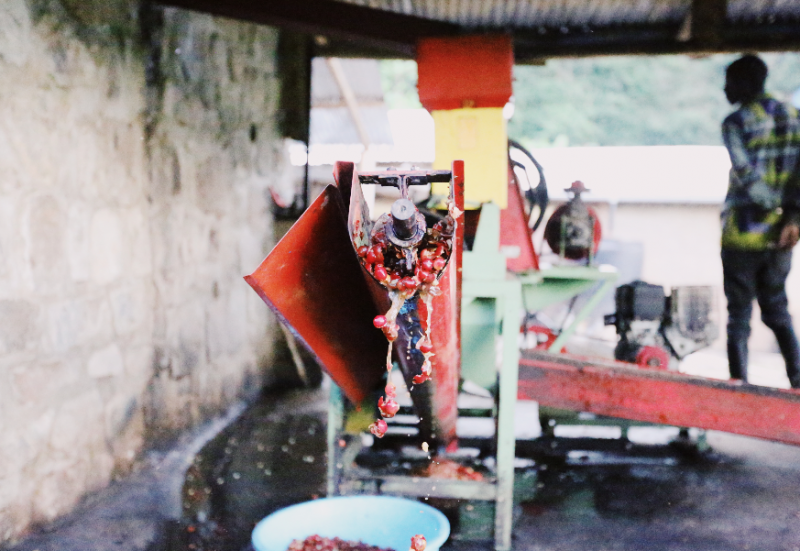
If you are a smallholder with 200 trees, how many kilos of cherry can you expect to get? Again, there is no industry wide rule for this. This all depends on the climate, the age of the trees, the quality of husbandry, etc. I’ve seen a range of less than a kilo per tree go all the way up to 10 kilos per tree. The later I’ve never seen in person, it’s the stuff of model farms with extreme levels of expensive inputs. A yield of 3 kilograms per tree is really good going in my experience. At this yield, a farmer of 200 trees could expect 600 kilograms each year. At the above cherry price that’s a payment of 216 dollars. That is once a year, for many African origins (a few places like Kenya have a second and smaller fly crop each year).
For a few reasons (mills have large costs to consider and farmers could be getting as little as 500g per tree) this estimate is probably too high and still not enough to live on. A 2017 Fairtrade study into the living standards of smallholders in seven coffee producing nations, found that only in one of which (Indonesia) were farmers, although certified, found to be on average compensated with a living wage.
Cooperative Production as a solution?
The cooperative model, the production of coffee through collective ownership of equipment, gives the opportunity for the farmer to benefit from the value adds of processing. The first recorded cooperative was a group of 28 weavers in 1844 in the UK. Co-operatives have since become common throughout East African coffee production. Despite a quarter century career in the design, implementation and support of the model – “its not a silver bullet” warns Andy Carlton co-founder of Zombo Coffee Partners.
Andy, also a Brit, started out assisting with seamstress cooperatives in Zimbabwe before helping TWIN, a fair trade coffee organisation set up cooperatives across Rwanda, Burundi, the DRC and Uganda.
Zombo is a rural area of western Uganda, near the border with the DRC. In 2015, in conjunction with Twin and Oxfam, Andy undertook a pilot programme to see if this region (also known as the Nile Highlands) could produce specialty coffee. Farmer groups constructed three cooperative microstations* – Leda, Culamuk and Pamitu. Despite intense rainfalls this year, which usually affects coffee quality, the stations produce lots scoring between 85 and 87.5 points on the SCA cupping score.
Unfortunately, the funding for the project was pinned to a single year and despite the promising results each of these stations struggled when the support ceased. This exposes one of the biggest weaknesses to the cooperative model: the desperate need for finance. Without finance the mill cannot afford to buy cherry. Because of this, in the two following years (2016, 2017) these microstations did not produce enough coffee to export. *A micro station is a washing station on a smaller scale usually costing a tenth of what a larger station requires. Farmers “buy in” to the microstation by providing materials, labour or both.
A second criticism often levelled at cooperatives is about quality. Producing high quality coffee requires a lot of hands on work – which requires technical as well as financial support. A team of workers need to separate the defective cherry, any under ripe, over ripe and insect damaged. These workers continue to remove defects after pulping and whilst the coffee is drying, a hand processed of constant agitation to assure uniformity.
The final criticism of the cooperative model is a lack of access to markets. With regard to coffee, marketing is more than social media strategy, establishing a consistent off take of coffee is the definition of sustainability. Cooperatives often do not have the international connections to sell their coffee. They can become reliant on the multinational exporters who can drive a tough bargain. This is another reason cooperatives struggle to apply for finance, grow and sustain their operations.
Zombo Coffee Partners (ZCP)
After years of tailoring solutions to these problems, Andy created Zombo Coffee Partners to strategically target these three areas of weakness.
He cashed in his personal savings to provide the original three (which has since grown to eight!) stations with the working capital they needed. With this support the stations are flourishing – Pamitu’s production has lept 900% in the past year.
ZCP also brought on Aggrey Chombe as a partner. Aggrey was born in the Zombo region and has set up his own NGO which has helped farmers through the promotion of sustainable agricultural practices. Combining Aggrey’s ties to the community, with Andy’s coffee knowledge – ZCP travels each week to provide technical support to these microstations.
Finally ZCP serves as a marketing partner for these stations. Co-founder Jason Ferriman is managing the sales office in Kampala and can be found running around trying to sell this coffee. They attend World of Coffee events, African Fine Coffee Association events – all to best publicise the coffee coming from the Zombo region.
When ZCP started to work in the region two years ago a smallholder coffee farmer had two options. Sell to a big multinational operating in the area for 20 USD cents per kilo, or sell to the other big multinational who are buying coffee processed at home for 18 USD cents per kilo. With ZCP pre-financing support, microstations were able to pay 27 USD cents in 2018 and 37 USD cents in 2019! This is on top of an operating levy paid to the microstation to employ staff for the season.
ZCP operates on a transparent basis and opens their books for anyone looking to start a relationship. They have a set cost of production figure which combines their prefinance for purchasing cherry and running the station. This figure includes ZCP’s cost of running its office in the Zombo region, which includes the costs of maintaining and running a vehicle to the stations each week.
ZCP has committed to sharing a third of the profit on each exportable lot with the farmers. We are currently contracting a coffee at a price that an extra 25 US cents will be owed to the farmers – another 4 cents when translated back into cherry price. This commitment is regardless of whether the company makes a profit. Last year it declared a loss, but farmers from Culamuk and Ajere still received this reward for quality.
ZCP has in a very short time had a massive impact on the Zombo region. Farmers who once had little choice to sell cherry at 18-20 cents are now receiving close to double this. With the profit share farmers are rewarded for quality, and this has the potential to increase farmer earnings considerably. As the volumes of the microstations grow, ZCP’s fixed costs become less of a burden and more money will flow to the bottom line, and ultimately farmers.
When we visit East Africa, we often come back with stories of individual success or trial. This is understandable, these stories are inspiring. But as the coffee world becomes more interested in transparency and sustainability we must meet this interest with figures. Through “Transparent Trade” and transparency.coffee’s “Pledge” – we are discovering more and more about how much roasters pay for coffee. This is important because we have seen that at the current C market price, is not good enough. But this development is just one step in the journey, in East Africa what roasters are paying is not what small holders are receiving.
I started the article saying that I used to love specialty coffee and truthfully, I still do. So my cup of 10 GBP AeroPress didn’t save the world, but it was a step on my journey; a journey where I get to meet people like Andy, Aggrey and Jason. It’s individuals like these that are changing our industry for the better. It’s a privilege to be associated with them.